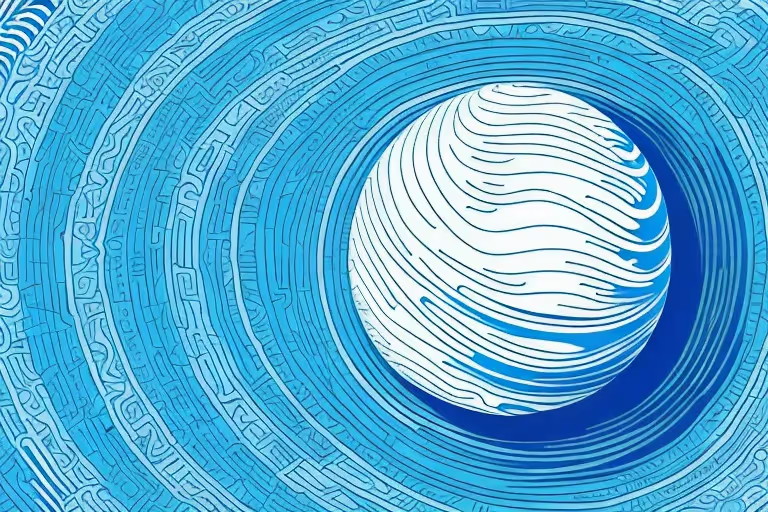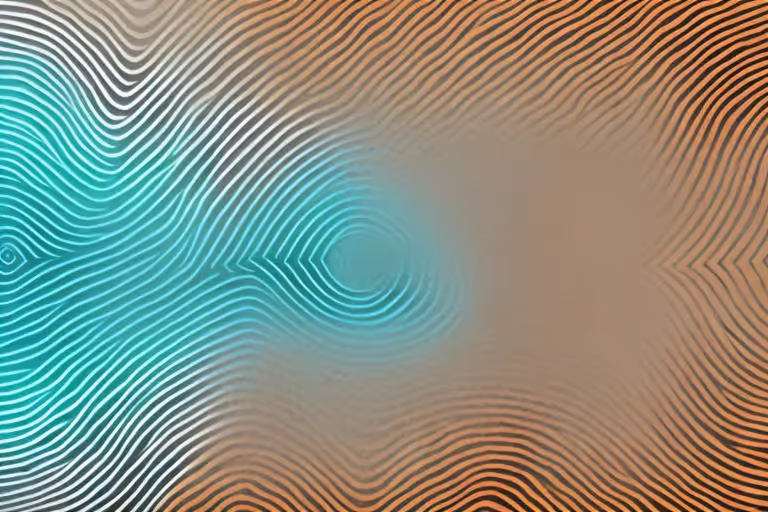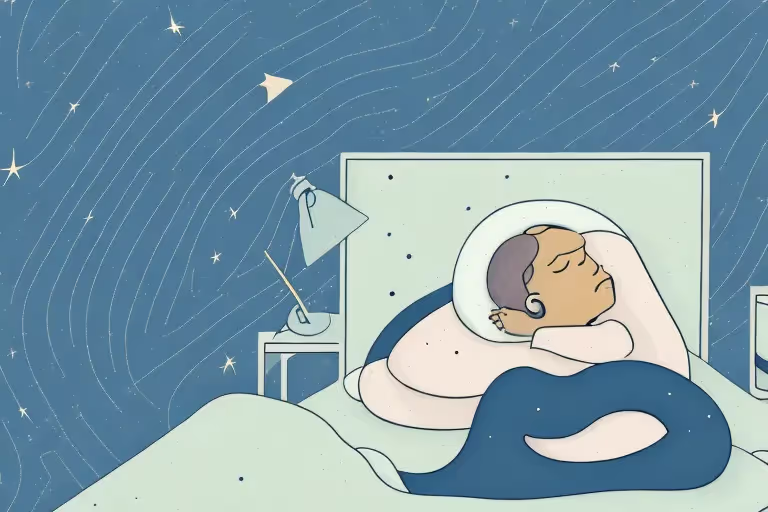Have you ever heard of the Schumann Resonance? No, it's not some fancy dish from a Michelin-star restaurant. It's actually a natural phenomenon that occurs within the Earth's atmosphere. In this article, we're going to explore the ins and outs of Schumann Resonance. So, buckle up and get ready for a wild ride!
The Science Behind Schumann Resonance
Let's get scientific for a moment. Schumann Resonance is a low-frequency electromagnetic resonance that exists between the Earth's surface and the ionosphere. It was first predicted by the genius Nikola Tesla (you know, the guy who had a weird obsession with pigeons) and later discovered by Winfried Otto Schumann (clearly not as cool as Tesla but still pretty cool).
But, why is Schumann Resonance so important? Well, it turns out that this resonance frequency is in harmony with the biological rhythms of our bodies. This means that Schumann Resonance has the potential to positively impact our health and wellbeing.
Electromagnetic Waves and Earth's Atmosphere
Now, I know what you're thinking. You fell asleep during science class and have no idea what electromagnetic waves are. Don't worry; I've got you covered (I always do). Electromagnetic waves are waves that travel through space, carrying energy. They come in different forms, like light, x-rays, and radio waves. And, they're all around us, even though we can't see them. Pretty trippy, huh?
So, how do electromagnetic waves relate to Schumann Resonance? Well, the ionosphere and the Earth's surface act as a giant waveguide that traps these waves, creating a resonance frequency. It's kind of like how those fancy wine glasses produce a sound when you run your finger along the rim. The Earth's atmosphere is like one giant, never-ending wine glass. Bottoms up!
The Ionosphere and Its Role in Schumann Resonance
The ionosphere is the outer layer of Earth's atmosphere, stretching from 50 to 600 miles above the Earth's surface. It's filled with free electrons that can absorb and reflect electromagnetic waves. The ionosphere is the key to Schumann Resonance. It acts like a giant antenna, picking up signals from the Earth's surface and reflecting them back down.
But, did you know that the ionosphere is not a fixed layer? It changes in response to solar activity, weather patterns, and even the time of day. This means that the frequency of Schumann Resonance can also fluctuate, depending on these factors.
Additionally, the ionosphere is not the only layer of Earth's atmosphere that plays a role in Schumann Resonance. The troposphere, which is the lowest layer of Earth's atmosphere, also contributes to this phenomenon. It's where most of our weather occurs, and it's also where lightning strikes happen.
Lightning and Its Contribution to Schumann Resonance
Believe it or not, lightning plays a significant role in Schumann Resonance. When lightning strikes, it produces a burst of radio waves that travel up into the ionosphere. These waves add to the already existing standing wave pattern, creating a stronger frequency.
But, did you know that lightning strikes happen over 8 million times per day? This means that Schumann Resonance is constantly being reinforced by these lightning strikes, creating a powerful and stable frequency that's in harmony with our bodies.
So, the next time you see a lightning storm, think of it as the Earth's way of giving us an electric massage (just kidding, please don't try that at home).
The Discovery of Schumann Resonance
Now that we've established what Schumann Resonance is let's take a trip down memory lane and discuss how it was discovered.
Winfried Otto Schumann's Research
Winfried Otto Schumann was a German physicist (not to be confused with Willy Wonka) who was interested in the Earth's magnetic field. In 1952, he published a paper that discussed the existence of a natural frequency that existed between the Earth and the ionosphere.
As a result of his research, Schumann discovered that the space between the surface of the Earth and the ionosphere, which is the electrically charged layer of the Earth's atmosphere, acts as a resonant cavity for electromagnetic waves. This cavity is created by the Earth's surface and the ionosphere acting as conductors, and it causes the waves to bounce back and forth, creating a standing wave.
He named this frequency the Schumann Resonance because he was the first to measure it, not because he wanted to sound like a doctor from Grey's Anatomy (although that would have been hilarious).
Early Experiments and Measurements
After Schumann's discovery, scientists all over the world began researching the phenomenon. They used different techniques to measure and observe the frequency, including balloons, rockets, and satellites.
One method involved sending a metal wire into the ionosphere and measuring the oscillation of the wire caused by the Schumann resonance (sounds pretty metal, right?). These early experiments helped us understand the fundamental frequency and its harmonics.
Scientists also discovered that the Schumann Resonance frequency varies depending on the location on the Earth's surface. For example, the frequency is lower at the North and South Poles and higher at the equator.
Modern Techniques for Observing Schumann Resonance
Nowadays, we have more advanced techniques for observing and measuring Schumann resonance. We use ground-based stations and satellites to monitor the frequency and changes to it over time.
These modern techniques have allowed us to gain a better understanding of how the Schumann Resonance frequency varies and how it affects our daily lives. For example, it has been suggested that the frequency can affect our brain waves and overall health.
Scientists are also studying how changes in the Schumann Resonance frequency can affect the Earth's climate and weather patterns. It has been suggested that changes in the frequency may be linked to natural disasters such as earthquakes and hurricanes.
In conclusion, the discovery of Schumann Resonance has had a significant impact on our understanding of the Earth's electromagnetic field and its effects on our daily lives. As technology advances, we will continue to learn more about this fascinating phenomenon and its potential applications.
The Schumann Resonance Frequencies
Now that we know how Schumann Resonance was discovered let's dive deeper into its frequencies.
The Fundamental Frequency and Its Harmonics
At its core, Schumann Resonance has a fundamental frequency of 7.83 Hz, which is also known as the alpha brainwave frequency. It's the frequency that's most in harmony with the human body and is linked to relaxation, concentration, and creativity (perfect for all those aspiring artists out there).
But, it doesn't end there. Schumann Resonance also has harmonics, which are frequencies that are multiples of the fundamental frequency. These harmonics can range from 14 Hz to upwards of 100 Hz. Each of these frequencies has its unique properties and can affect our bodies in different ways.
Factors Influencing Frequency Variations
The frequency of Schumann Resonance isn't constant and can vary depending on external factors. These factors include solar flares, thunderstorms, and even human activities like nuclear explosions (who knew humans were so powerful?).
But, don't worry too much about these variations. They happen naturally and are part of the Earth's electrical system. So, no need to panic if you feel a little off balance during a thunderstorm.
Global Distribution of Schumann Resonance Frequencies
Schumann Resonance isn't just limited to one part of the world; it's a global phenomenon. The frequencies may vary slightly depending on longitude and latitude, but the overall frequency pattern is the same.
This global distribution means that no matter where you are in the world, you're always resonating with the Earth's rhythms.
Schumann Resonance and Human Health
Now, for the part, you've all been waiting for. What does Schumann Resonance have to do with human health?
The Connection Between Schumann Resonance and Brainwaves
As mentioned earlier, the fundamental frequency of Schumann Resonance is in harmony with the alpha brainwave frequency. This harmony can help induce relaxation, reduce stress, and improve cognitive function.
Research has also shown that Schumann Resonance can influence our sleep patterns, hormone production, and immune system. It's like having a natural detox for your body.
Potential Health Benefits of Schumann Resonance
While there is still much research needed to fully understand the effects of Schumann Resonance on human health, some studies suggest that it can have the following benefits:
- Lowered stress levels
- Improved sleep quality
- Reduced inflammation
- Increased brain function and memory
So, if you want to boost your health, disconnect from the electronics and spend some time in nature.
Controversies and Debates Surrounding Schumann Resonance and Health
As with any new technology, there are always debates and controversies surrounding its use. Some people claim that Schumann Resonance can cure cancer (spoiler alert: it can't) or that it can be used to control our minds (mind control devices don't exist, folks).
It's essential to approach this topic with a critical eye and keep an open mind. While Schumann Resonance has many potential benefits, it's not a magic cure-all. It's just one piece of the puzzle that makes up our overall health and well-being.
Conclusion
So, there you have it, folks. Schumann Resonance is a fascinating natural phenomenon that has captured the attention of scientists and mystics alike. While we're still learning about its effects on human health, one thing is certain: we're all connected to the Earth's rhythms in some way.
The next time you're feeling stressed or out of balance, take a moment to step outside and connect with the Earth. It may just be the electric hug you need.
Aura is Your All In One App for Meditation, Mindfulness Wellbeing
Find peace every day with one app for your whole well-being. There is no one-size-fits-all solution to mental well-being. Aura is the first all-in-one wellness app that learns how to best help you. Discover an endless library of expert-created tracks for your well-being, all taught by the world’s best coaches, therapists, and storytellers. With Aura's personalized recommendations, you can find peace every morning, day and night.



.webp)






.avif)

%20(1).avif)


.avif)
.avif)
.webp)


.avif)


















































































































.avif)

















.svg)









